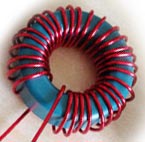Our team is continually hearing the same questions asked by different clients. These are typical concerns that most people have when it comes to shopping for and using toroids. We want to take some time and address some of the concerns our clients commonly have.

What are common applications for toroidal transformers?
These devices can be used in almost any application that requires an electronic transformer. Toroids cannot be used when they do not fit within the construction of the electronic equipment. Just because they can be used does not mean they should. Talk to our team to find out if toroids are right for you.
What are the most common materials used?
Silicon steel, moly-permalloy powder, amorphous, nickel-iron, and ferrites are the most commonly used materials, but there are others as well. Each material boasts a particular character trait that comes with advantages and disadvantages.
Why is a toroid more expensive than tube wound transformers?
This question is simple to answer. More delicate work is necessary to make a toroid as opposed to other transformers. Enough winding wire must be wound onto a winding shuttle and then wound around the core of the toroid. Complex toroids require different wire sizes, which means winding shuttles must be reloaded each time a new wire is used.
Does the doughnut shape really matter?
A 360-degree wound transformer is symmetrical (circular shape). The symmetry creates a near complete magnetic field cancellation outside of the coil. A toroid has less leakage inductance when compared to other transformers. It also emits less EMI into the surrounding environment.
Toroids
- Why do Toroidal Transformers Stand Out from Other Transformers
Commercial electronic devices and applications (computers, audio systems, televisions) use different transformer core shapes.
- Why a Donut Shape is Ideal
- Understanding Transformer Cores and Toroid Core Winding
- Relying on Toroid and Toroidal Transformers

